Can You Recycle Paper? A Comprehensive Guide
Paper, a fundamental part of our daily lives, serves various purposes from packaging to printing. As sustainability becomes a top priority, understanding the recyclability of paper is crucial. In this blog post, we delve into the world of paper recycling, exploring its environmental impact, the recycling process, and tips for maximizing the eco-friendly potential of this versatile material.
The Green Credentials of Paper:
Paper, derived from wood pulp, is inherently biodegradable and comes from a renewable resource – trees. However, the environmental impact of paper production and disposal has led to a growing emphasis on recycling to mitigate the depletion of forests and reduce waste in landfills.
Can You Recycle Paper?
Yes, paper is highly recyclable. The paper recycling process involves collecting, sorting, and processing used paper to create new paper products. However, not all paper is created equal, and certain types may present challenges in the recycling stream.
Types of Recyclable Paper:
- Office Paper: Clean and high-quality paper from offices is highly recyclable.
- Newspaper: Newspapers can be recycled into new newsprint.
- Cardboard: Cardboard boxes and packaging are recyclable, but they should be flattened before recycling.
- Magazines and Catalogs: Glossy magazines and catalogs can often be recycled.
- Paperboard: Used for items like cereal boxes, paperboard is generally recyclable.
Challenges in Paper Recycling:
Paper recycling, while a crucial component of sustainable waste management, faces several challenges that impact its efficiency and effectiveness. Understanding these challenges is essential for developing strategies to improve paper recycling processes. Here are some key challenges in paper recycling:
-
Contamination:
- Challenge: Contamination occurs when paper is mixed with non-paper materials, such as food residues, plastic, or metal. Contaminated paper is more difficult to process, leading to a lower quality of recycled paper.
- Impact: Contaminated paper can compromise the integrity of recycled paper products, affecting their usability and market value. It also increases the complexity of sorting and processing in recycling facilities.
-
Mixed Materials:
- Challenge: Paper products with mixed materials, such as laminated paper or items containing adhesives, can be challenging to recycle. These materials may not be compatible with standard paper recycling processes.
- Impact: Mixed materials can disrupt the recycling process, leading to increased sorting costs and potentially diverting paper items with mixed materials to landfills.
-
Ink and Dyes:
- Challenge: Inks and dyes used in printing processes can pose challenges in the recycling process. While advancements have been made in developing environmentally friendly inks, some printing materials may still contain harmful components.
- Impact: Inks and dyes can affect the quality of recycled paper, resulting in paper with less brightness or purity. Certain inks may also introduce contaminants that are challenging to remove during the recycling process.
-
Quality of Paper Fibers:
- Challenge: Each time paper is recycled, the length and strength of the paper fibers decrease. After multiple recycling cycles, the quality of paper fibers may become too degraded for further use.
- Impact: The diminishing quality of paper fibers limits the number of times paper can be recycled, contributing to the demand for virgin wood pulp in the production of high-quality paper products.
-
Consumer Behavior:
- Challenge: Inconsistent or incorrect recycling practices among consumers, such as not separating paper from other materials or failing to remove contaminants, contribute to challenges in the recycling process.
- Impact: Poor recycling habits can result in increased contamination rates and reduce the efficiency of paper recycling. Public education and awareness campaigns are essential to address this challenge.
-
Logistical Issues:
- Challenge: The logistics of collecting, transporting, and processing paper for recycling can be complex, especially in regions with limited recycling infrastructure. Inefficiencies in collection and transportation can increase the overall cost of paper recycling.
- Impact: Logistical challenges may lead to increased transportation-related emissions and hinder the scalability of paper recycling programs in certain areas.
-
Economic Viability:
- Challenge: The economic viability of paper recycling is influenced by factors such as market demand for recycled paper, fluctuating prices of virgin materials, and the cost of recycling technology and infrastructure.
- Impact: If the economic conditions are unfavorable, recycling facilities may face financial challenges, potentially affecting the sustainability of paper recycling programs.
Addressing these challenges requires a collaborative effort involving consumers, businesses, and policymakers to improve recycling practices, invest in advanced technology, and promote a circular economy that prioritizes the efficient use of resources.
Maximizing Paper Recycling:
- Separate Paper from Other Materials: Ensure that paper items are separated from non-recyclable materials before recycling.
- Remove Contaminants: Cleanse paper of food residue or non-paper elements before recycling.
- Explore Local Recycling Guidelines: Familiarize yourself with local recycling guidelines, as these may vary by region.
Environmental Benefits of Paper Recycling: Unlocking the Green Potential
Paper recycling is not just a practical waste management solution; it’s a powerful ally in the global pursuit of environmental sustainability. By choosing to recycle paper, individuals and communities contribute to a range of environmental benefits that extend far beyond waste reduction. Here’s a closer look at the significant environmental advantages of paper recycling:
-
Conservation of Resources:
- Explanation: The primary source of paper is wood pulp obtained from trees. By recycling paper, we reduce the demand for virgin wood pulp, thus conserving forests. Forests play a crucial role in carbon sequestration, biodiversity, and maintaining ecological balance.
- Impact: Conserving forests helps combat deforestation, preserving habitats for countless species and mitigating the effects of climate change. It also safeguards the essential services that forests provide, such as clean air, water filtration, and soil stability.
-
Energy Savings:
- Explanation: Producing paper from raw materials requires substantial energy inputs, including the extraction and processing of wood pulp. In contrast, the paper recycling process consumes significantly less energy. Recycling facilities use less energy to process recycled paper compared to the energy-intensive production of paper from virgin materials.
- Impact: Energy savings in the paper recycling process contribute to a reduction in greenhouse gas emissions and lessen the environmental footprint associated with paper production. This aligns with global efforts to transition to more sustainable and energy-efficient practices.
-
Waste Reduction:
- Explanation: Recycling paper diverts it from landfills, where it would contribute to the growing volume of waste. Landfills are a significant source of environmental pollution, emitting greenhouse gases and posing risks to soil and water quality.
- Impact: By reducing the volume of paper waste in landfills, paper recycling plays a vital role in minimizing the environmental impact of waste disposal. This aligns with the principles of a circular economy, where materials are reused and recycled, rather than treated as disposable and non-renewable.
Measuring the Impact:
- Carbon Footprint Reduction: The conservation of forests and the energy savings achieved through paper recycling contribute to a lower overall carbon footprint associated with paper production.
- Biodiversity Protection: By reducing the demand for virgin wood pulp, paper recycling helps protect biodiversity by preserving natural habitats and ecosystems.
- Landfill Space Preservation: Waste reduction through paper recycling extends the lifespan of landfills, postponing the need for additional landfill sites and reducing the environmental strain on local ecosystems.
Encouraging Responsible Practices:
- Individual Action: Encouraging individuals to participate in paper recycling programs empowers them to be active contributors to environmental conservation.
- Corporate Responsibility: Companies adopting sustainable practices, including the use of recycled paper in their operations, amplify the positive impact on the environment.
FAQ’s
1. What types of paper can be recycled?
- Generally, office paper, newspapers, cardboard, magazines, and paperboard are recyclable. However, it’s essential to check with your local recycling program for specific guidelines.
2. Can paper with ink or printing be recycled?
- Yes, paper with ink or printing can be recycled. Advances in recycling technology have made it possible to remove ink during the recycling process.
3. Is shredded paper recyclable?
- Shredded paper is recyclable, but it’s advisable to check local guidelines. Some recycling facilities prefer shredded paper to be contained in a paper bag to prevent it from becoming a sorting issue.
4. Why is paper recycling important?
- Paper recycling is vital for conserving natural resources, reducing energy consumption, and minimizing the environmental impact of waste. It helps protect forests, lower greenhouse gas emissions, and promotes a circular economy.
5. How can I recycle paper at home?
- Separate paper from other materials, remove contaminants like plastic or food residues, and place recyclable paper in designated recycling bins. Follow local guidelines for collection and recycling practices.
6. Can paper towels and napkins be recycled?
- Used paper towels and napkins are typically not recyclable due to contamination with food residues. Consider composting them if possible.
7. Are pizza boxes recyclable?
- Pizza boxes are recyclable if they are not heavily soiled with grease or food residues. Tear off any clean portions and recycle them, while the soiled parts can be composted.
8. How many times can paper be recycled?
- The number of times paper can be recycled depends on the quality of the fibers. On average, paper can be recycled five to seven times before the fibers become too short and need to be mixed with virgin fibers.
9. Why is paper recycling better than using virgin materials?
- Paper recycling reduces the demand for virgin wood pulp, conserving forests and lowering energy consumption. It also minimizes environmental pollution associated with the extraction and processing of raw materials.
10. Can I recycle paper with staples or paper clips?
- Small amounts of staples or paper clips are generally acceptable in paper recycling. Modern recycling facilities can remove these during processing.
11. Where can I find information about local paper recycling guidelines?
- Check with your local municipality or waste management authority for specific guidelines on paper recycling. They often provide information online or through informational pamphlets.
12. What should I do with sensitive documents for shredding?
- Shred sensitive documents before recycling. Place the shredded paper in a paper bag and ensure it is clean of non-paper materials to avoid contamination issues during the recycling process.
As we navigate the landscape of sustainable living, paper recycling emerges as a straightforward yet impactful practice. By incorporating responsible paper disposal habits into our daily lives, we collectively take strides towards a greener future. As technology and awareness advance, the potential for more efficient and eco-friendly paper recycling processes continues to grow, underscoring the importance of our individual and collective roles in building a more sustainable world.
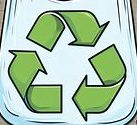
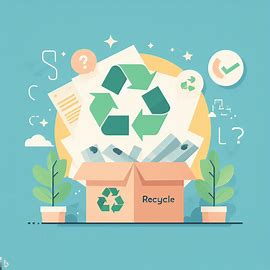
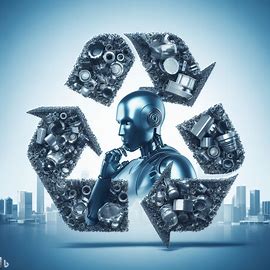
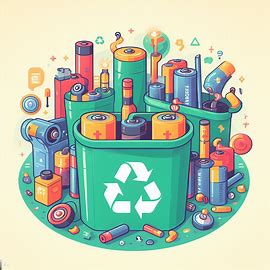



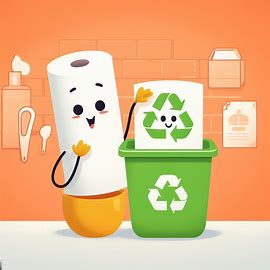
One Comment